Being between jobs, it seems like a good time to tackle a few items on the ever-growing “shop improvements” checklist. Things are added quicker then they’re checked off, though two more Moravian workbenches are nearing completion. These will become student benches next summer.
[If you’re ever wondering about your shop’s impression, might I recommend inviting a class of 5th graders into the space. That’s what I did a couple weeks ago for a few hours together to make the class a full set of walking sticks. It was illuminating (though the better word might be “humbling”).
“Why isn’t this finished?”
“Doesn’t this machine work?”
“This tool stinks.”
“How much money do you make?”
“Can’t you afford to complete these things?”
Noted, children. I’ll get moving on that punchlist.]
Completing these two benches will make three Moravian benches in total here in the shop. I like the bench design, though I don’t use them as intended, meaning there are better/faster benches to build for the way I work. There are modifications added to these, and I’ve bolted the top to the frame, limiting one of the design’s main advantages.
But before jumping into all of it, please look towards Will Myers for technical and historical information about these benches. I started building these two with Will during a class of his at Pine Croft a few years ago. [He teaches these from time-to-time, and has a video and plans available.]
The two newer benches are made of ash since, at that time in central Kentucky, we were trying to cut and use the timber before the borer got to it all. Nathan Skinner (of @woodthrushwares Clark County, KY) milled the slab tops. Half-completed, these came with me to Maine in parts and remained in half-completed project limbo until the past week.
The bench is designed to knock down for easy transportation. It was originally used by house carpenters. Easy up, easy down. Will studied the originals around North Carolina and they had a tool try on the back half. I preferred a solid top, so the three I own will all omit the tool tray (making them more conducive to chairmaking).
The originals break down into seven major parts (top, tool tray, (2) ends, 2 (rails), and the vise chop). One issue that came from the ease of portability was that the cantilevered top often popped off the alignment pegs during heavy use, especially when chopping at the ends of the bench. I eventually added lag bolts to the top and frame, along with a fixed shelf across the base. It’s less transportable, but I wasn’t moving it around anyways (the idea of taking it to demonstrations & events didn’t come to fruition).
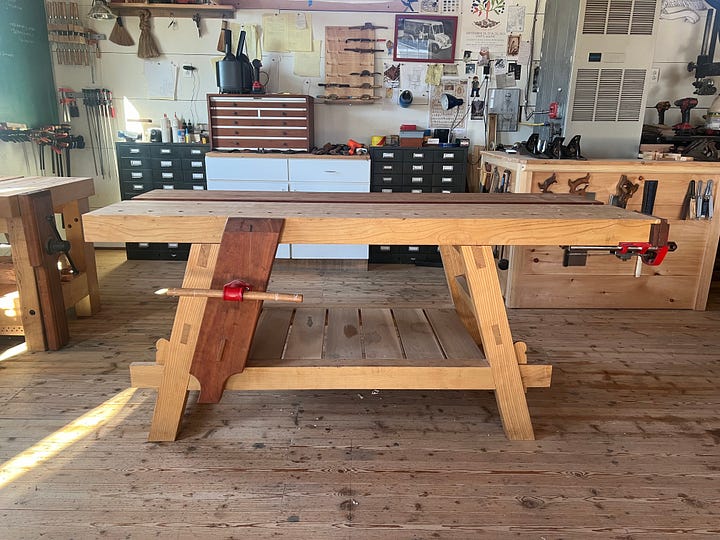
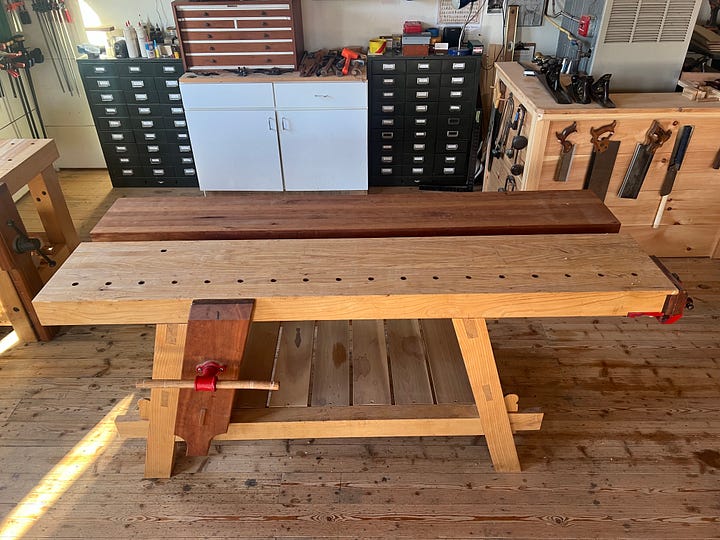
Also, I added a split top to my initial bench. The next two will not have this feature. I haven’t enjoyed the split top…too many pinched fingers and bruised hands while planing. But the main reason I dislike it is that the shavings and debris fall into the top (and onto the shelf and under the bench). They fall into all the hard-to-reach places during cleanup. I’ll eventually fill that open area…it’s on the punchlist.
The quick-release bench vise at the end…that’s an adequate solution for an end vise. Will Myers makes and sells wagon vises. Eventually I’ll add them to all three of these benches. The quick-release vise requires a longer overhang and is added weight (which is problematic if the goal is portability).
These next two will hold another solid benchtop on the back half. Ash is unlikely, unless it’s the cheapest and hardest material available at the lumberyard. The front half of the bench sees the most work, making another softer material possible for the back. Anything but poplar. [Sorry, poplar.] Then I’ll bolt them to the frame and add a shelf.
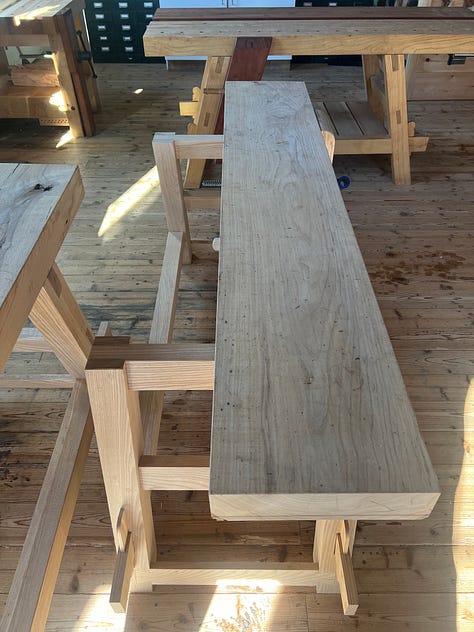
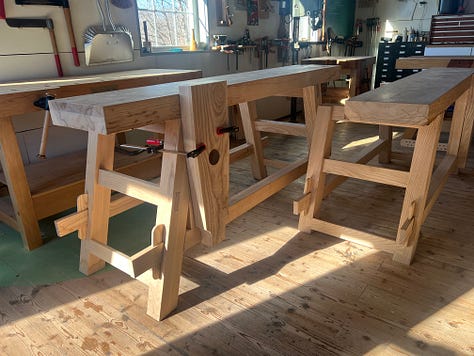
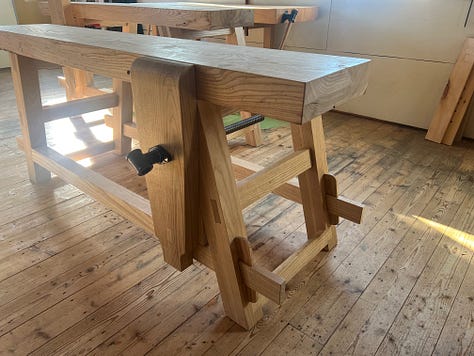
In short, I’d recommend these benches. Especially if you’re looking for portability. They’re slightly overbuilt as a fixed bench. But the work is (nearly) done at this point and they are plenty stout for my work.
Keep reading with a 7-day free trial
Subscribe to With Working Hands to keep reading this post and get 7 days of free access to the full post archives.



